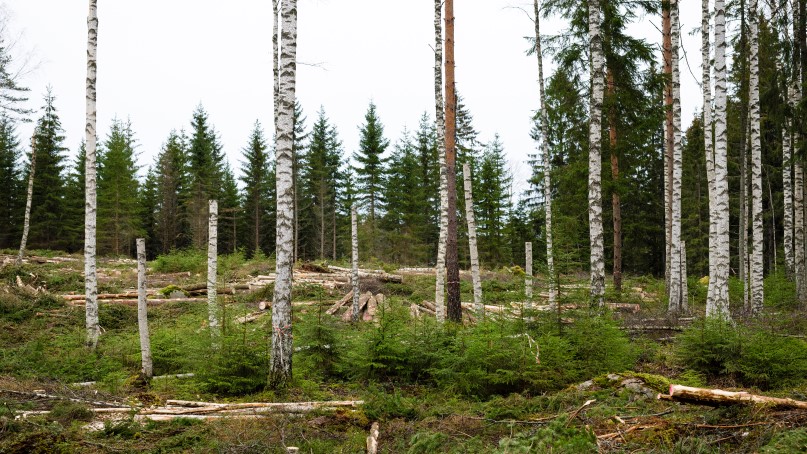A protective thicket is created when brush and small trees are left untouched in the clearing preceding a felling. Protective thickets are also left during the management of seedling stands and young forests.
A good protective thicket has many tree species
A good protective thicket includes at least two or three species of trees, with the sizes of the trees varying. The undergrowth should ideally include spruce, and juniper and other shrubs are also preferred. The dwarf shrub layer should ideally include bilberry.

Protective thickets are primarily placed in connection with groups of retained trees, high stumps and decaying wood. A good location for a protective thicket is a place on the terrain where animals naturally thrive. Such locations include depressions, dells, the edges of forest stands, transitional zones between moors and bogs, and areas along overgrown ditches. In addition, protective thickets should be located in those places that are the most difficult in terms of forest management work and felling, as this reduces the cost of the work.
In preliminary clearing, it is important to ensure that the protective thicket continues to serve as a sight screen near the ground. A good protective thicket includes various species of trees and trees of different sizes. Spruce is important because it is a tree with dense branches.
New thickets in connection with clearing saw works and thinning
New protective thickets are established in connection with clearing saw works and thinning. Groups of retention trees created during previous felling operations are treated as protective thickets during subsequent forest management operations. Protective thickets are excluded from forest management measures during all phases of forest management. The goal is to preserve the thickets over many cycles.



